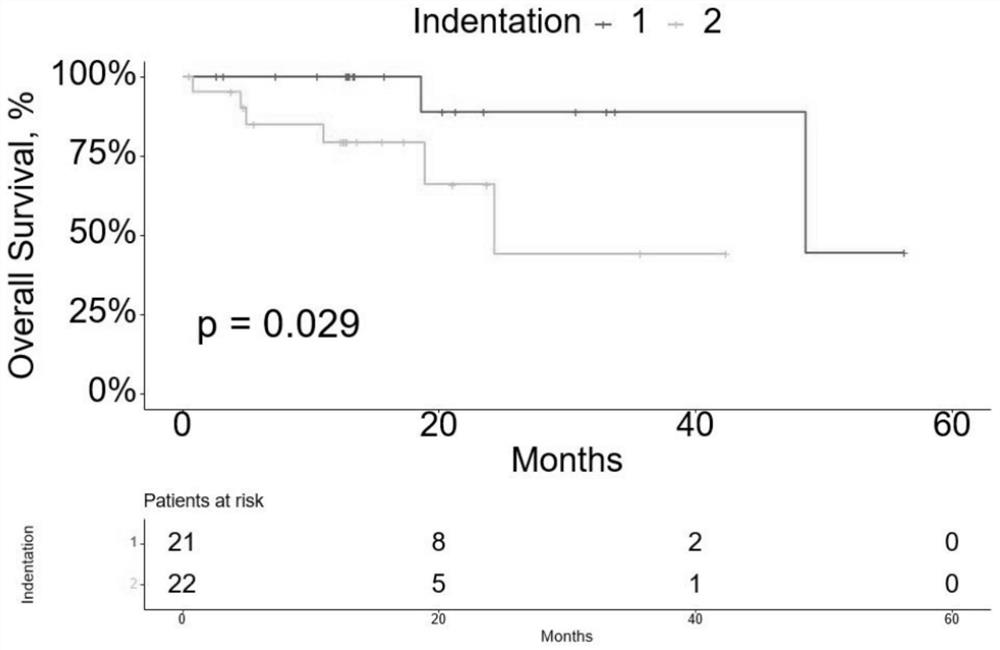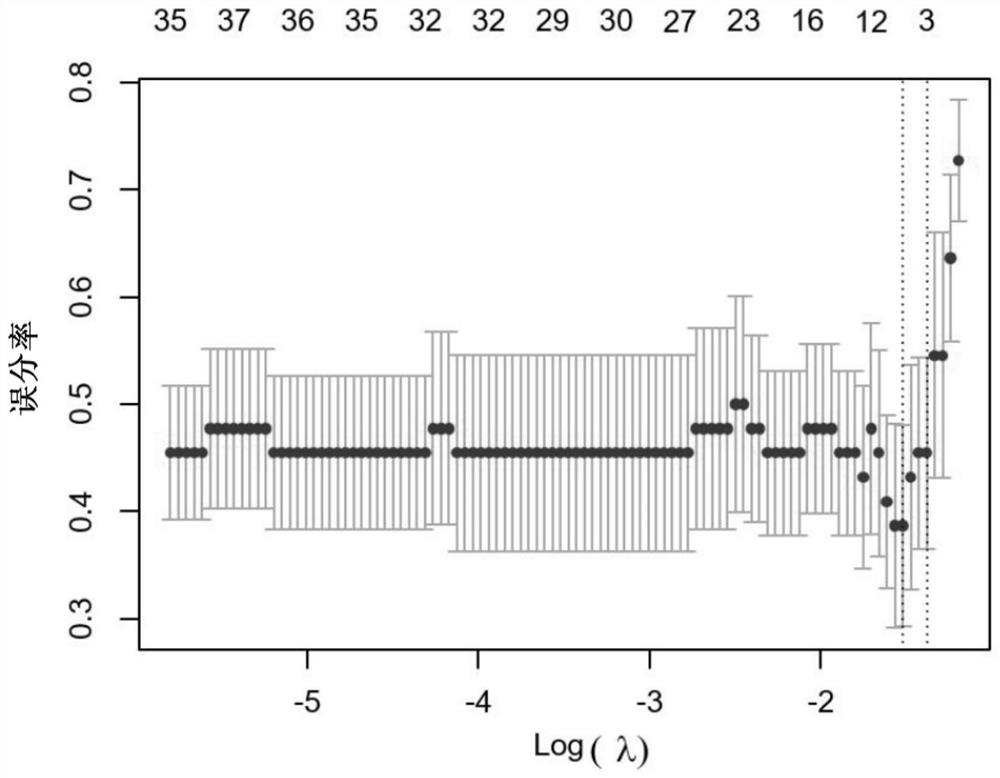Gene composition for detecting specific intestinal flora proportion of esophageal cancer patient and application of gene composition
A technology for intestinal flora and esophageal cancer, applied in the field of molecular diagnosis, can solve the problems of expensive detection and achieve good sensitivity and specificity, high accuracy, and economical results
- Summary
- Abstract
- Description
- Claims
- Application Information
AI Technical Summary
Problems solved by technology
Method used
Image
Examples
Embodiment 1
[0019] Construction of a scoring model for predicting the proportion of specific intestinal flora (Bacteroidetes, Firmicutes, Actinobacteria) in patients with esophageal cancer:
[0020] In the first step, the data of 44 esophageal cancer samples were obtained from the TCGA and TCMA databases, and the samples were divided into high proportion groups (n=21) according to the proportion of specific intestinal flora (Bacteroidetes, Firmicutes, Actinobacteria) and the low proportion group (n=22), by performing LASSO regression analysis on the expression data of all genes in the full RNA expression profile of 44 samples in [log2(FPKM+1) form], such as figure 1 As mentioned above, the genes significantly related to the proportion of specific intestinal flora (Bacteroidetes, Firmicutes, Actinobacteria) were obtained, and finally 10 genes were selected: SNX3, AKIRIN2, TMEM87B, STEAP3, PPME1, LGALS7B, ARFRP1, STX11, RP11 -295P9.3, RP11-434D12.1
[0021] The second step is to construct ...
Embodiment 2
[0025] Validation of the scoring model:
[0026] RNA sequencing was performed on 25 esophageal cancer samples collected from the Thoracic Surgery Department of Zhongshan Hospital affiliated to Fudan University, and the proportion of any one or more of the intestinal flora Bacteroidetes, Firmicutes and Actinobacteria was detected, and the RNA expression data were brought into the prediction The model obtains the Score score of each sample. Those whose scores are higher than the cutoff value of 0.008 are the high proportion group, and those whose scores are lower than the cutoff value of 0.008 are the low proportion group. The results are shown in Table 1.
[0027] Table 1 Validation results of the scoring model
[0028]
[0029] The experimental results show that the prediction model has a sensitivity of 0.812 and a specificity of 0.88.
PUM
| Property | Measurement | Unit |
|---|---|---|
| Sensitivity | aaaaa | aaaaa |
| Sensitivity | aaaaa | aaaaa |
Abstract
Description
Claims
Application Information
 Login to View More
Login to View More - R&D
- Intellectual Property
- Life Sciences
- Materials
- Tech Scout
- Unparalleled Data Quality
- Higher Quality Content
- 60% Fewer Hallucinations
Browse by: Latest US Patents, China's latest patents, Technical Efficacy Thesaurus, Application Domain, Technology Topic, Popular Technical Reports.
© 2025 PatSnap. All rights reserved.Legal|Privacy policy|Modern Slavery Act Transparency Statement|Sitemap|About US| Contact US: help@patsnap.com



